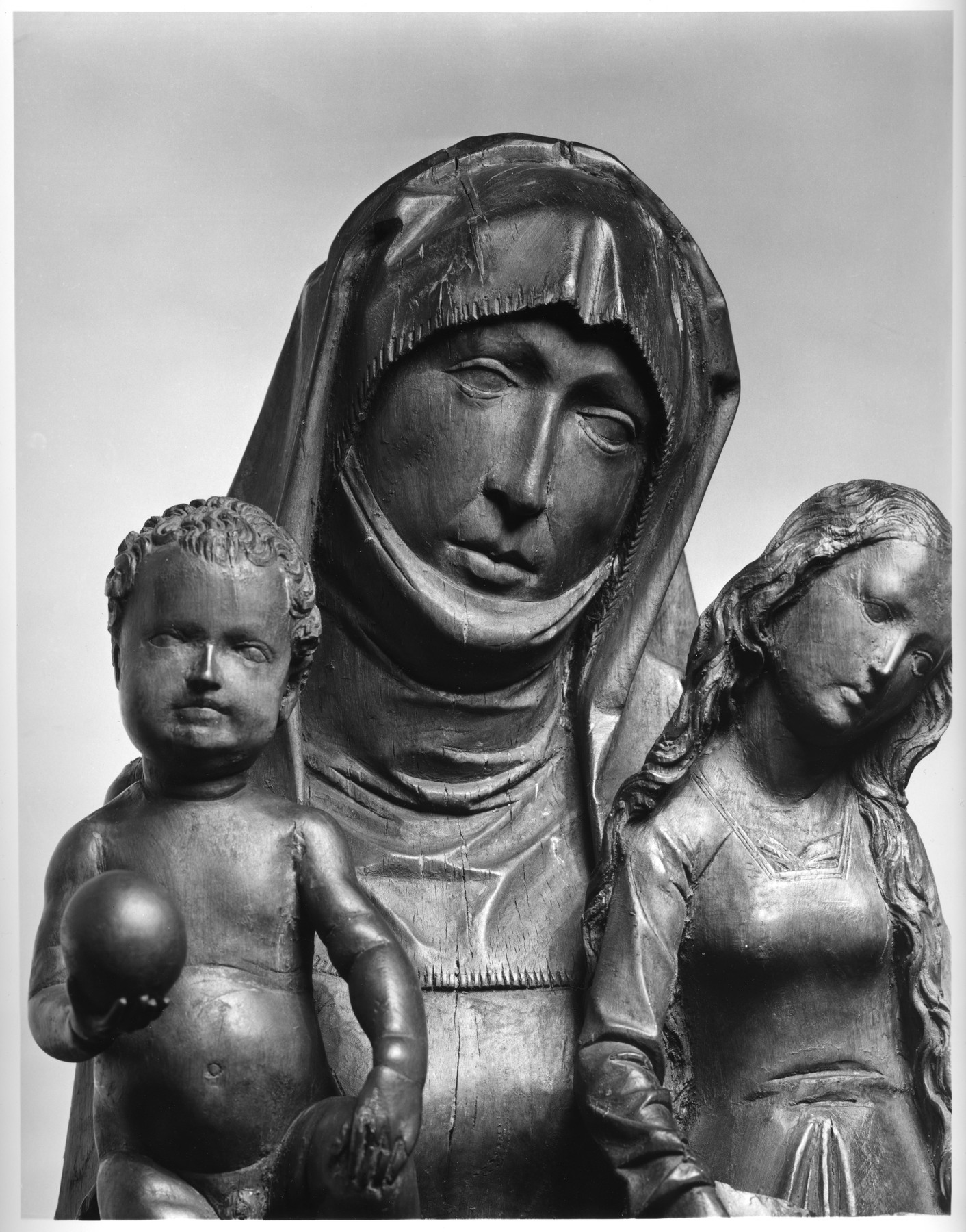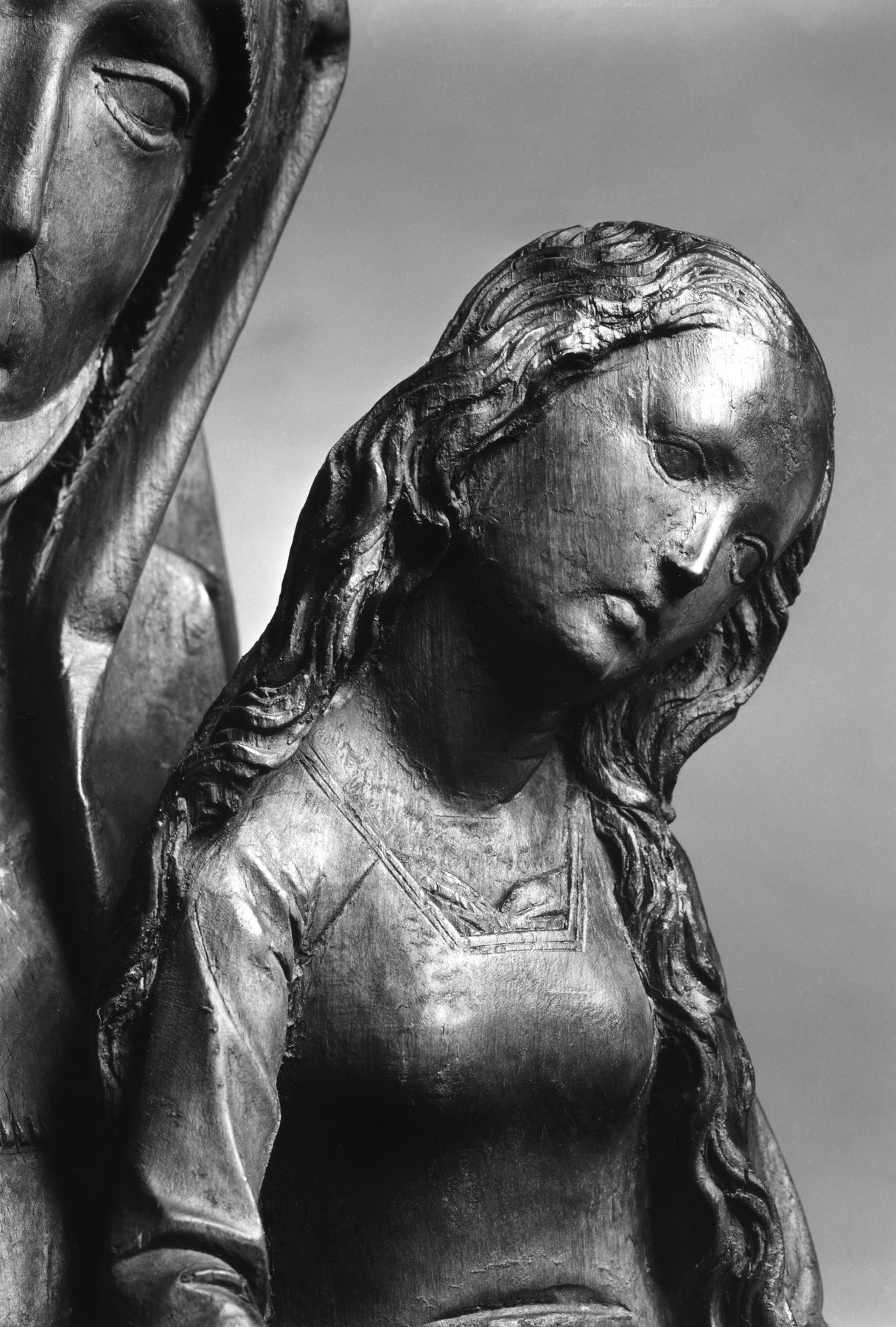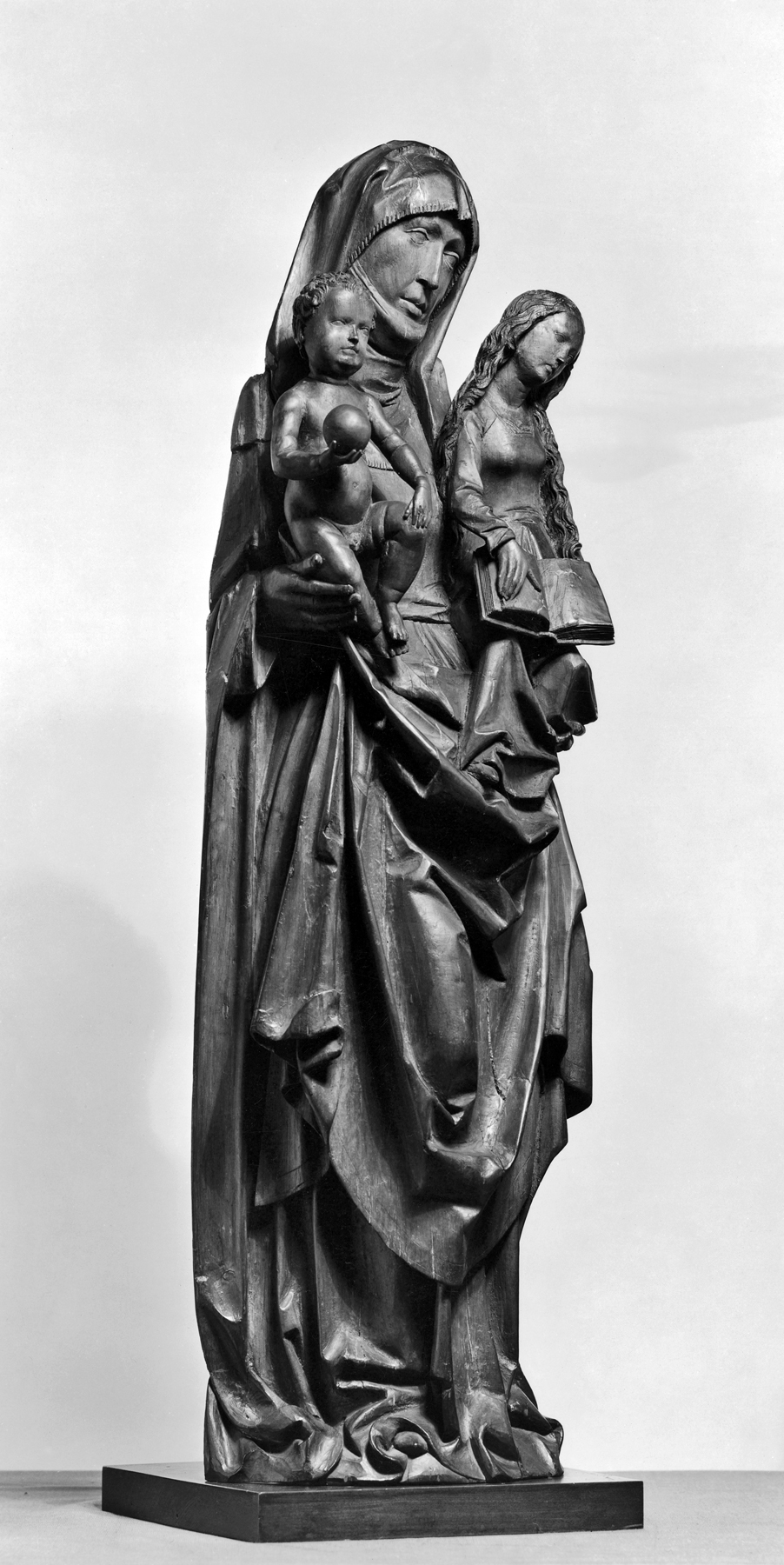The Holy Kinship (St. Anne, the Virgin, and the Christ Child)
(Renaissance Europe )
The grouping of the Virgin's mother, Saint Anne, with the Virgin and the Christ Child emphasized the role of christ's extended family is known as the Holy Kinship and was especially popular in germany and the Netherlands in the late 1400s and early 1500s,
Much of the wood sculpture of the time was intended to be painted. The great German sculptor Riemenschneider was the first to experiment seriously with leaving the wood unpainted, thereby emphasizing the play of volumes more than surface decoration. While the primary figure of St. Anne conveys the disnity and sense of form associated with riemenschneider, the small figures of the Christ Child and also the Virgindemonstrate much less skill in carving and appear to be the work of the master's workshop.
Provenance
Provenance (from the French provenir, 'to come from/forth') is the chronology of the ownership, custody, or location of a historical object. Learn more about provenance at the Walters.
Raoul Heilbronner, Paris, by purchase; Henry Walters, Baltimore, 1908, by purchase; Walters Art Museum, 1931, by bequest.
Conservation
| Date | Description | Narrative |
|---|---|---|
| 2/28/1939 | Treatment | cleaned; other |
| 8/28/1944 | Examination | examined for condition |
| 10/15/1958 | Treatment | cleaned |
| 7/9/1962 | Examination | examined for loan |
| 9/14/2006 | Treatment | cleaned; repaired |
Geographies
Germany, Franconia (Place of Origin)
Measurements
39 3/8 x 13 x 8 1/16 in. (100 x 33 x 20.5 cm)
Credit Line
Acquired by Henry Walters, 1908
Location in Museum
Centre Street: Third Floor: 15th-Century Art of Northern Europe
Accession Number
In libraries, galleries, museums, and archives, an accession number is a unique identifier assigned to each object in the collection.
In libraries, galleries, museums, and archives, an accession number is a unique identifier assigned to each object in the collection.
27.294








